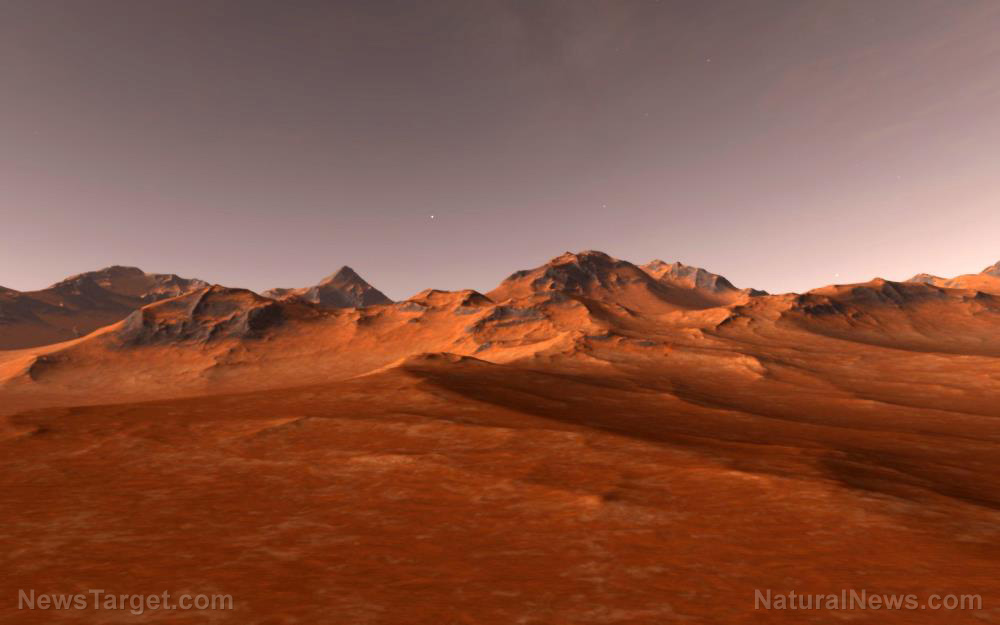
Mars might have no active volcano and no streams of water to speak of, but it has vast shifting sand dunes that continually churn out gullies. That's according to a study published recently in the journal Geophysical Research Letters, which shows that gullies form on the sand dunes in the planet's south every Martian spring.
How the Martian seasons drive the formation of gullies
The Russell crater in the planet's southern hemisphere is home to the biggest sand dunes in the solar system. Satellite images of Mars show that these sand dunes harbor long indentations in the ground known as gullies.
"For over two decades, planetary scientists have had many ideas about how and when very long, narrow gullies formed on frost-affected sand dunes on Mars," said Cynthia Dinwiddie, a scientist at the Southwest Research Institute in Texas and the lead researcher of the study.
The gullies in Russell, according to Dinwiddie, were first thought to be remnants of an ancient time when Mars harbored liquid water on its surface. But subsequent observations showed that new gullies still crop up and old ones seem to be changing to this day.
Recently, researchers observed bright ice-like features at rest in dune gullies and proposed that rolling blocks of dry ice (the solid form of carbon dioxide) created those gullies. Dinwiddie and co-researcher Timothy Titus of the U.S. Geological Survey then revisited years' worth of satellite images taken using the cameras aboard the Mars Reconnaissance Orbiter.
The images showed that outgassing carbon dioxide dislodges blocks of dry ice, which carve new gullies and modify existing ones as they tumble down the dunes. The researchers suggested that Martian seasons drive this process.
During the fall and winter, temperatures plummet to a point where carbon dioxide freezes and forms ice deposits along the dunes. Then in the early spring, these ice deposits heat up and vent out carbon dioxide, causing small fragments of ice to fly into the air and some slabs of ice to split apart.
The slabs at the dunes' crest then slide down the slopes while the ice fragments fall back onto the ground to form a bright fringe pattern around the dunes. This pattern would brighten the area for some time before getting wiped out by dust storms in the late spring and summer. (Related: Landslides on Mars may be caused by melting underground ice, study suggests.)
Dinwiddie and Titus plan to extend their research to other craters in the southern hemisphere of Mars, which provide low-lying traps for sand to accumulate and form frosted dune fields.
How the sand dunes of Mars shift so quickly
A study published in the journal Geology shows how sand dunes on Mars shift relatively quickly even if its atmosphere does not generate strong winds.
"On Mars, there simply is not enough wind energy to move a substantial amount of material around on the surface," said Matthew Chojnacki, a planetary scientist at the University of Arizona and the lead researcher of the study.
"It might take two years on Mars to see the same movement you'd typically see in a season on Earth," he went on.
Chojnacki and his team tracked the movement of around 500 individual dunes using images taken by the Mars Reconnaissance Orbiter. By selecting pairs of images that showed the same patch of ground years apart, they were able to measure how fast each dune shifted.
The team's analysis showed that most of the Martian sand dunes move at a fraction of the speed of Earth's sand dunes. Meanwhile, Syrtis Major, the Hellespontus mountains and a region known as the "north polar ergs" sport significantly faster sand movement compared to the rest of the dunes.
The researchers suspect that dramatic changes in surface elevation and temperature drive the sand movement in these regions. These changes arise, according to the researchers, when different types of surface features neighbor each other.
These studies show that though Mars has no running water and active volcanoes, its surface is still quite active and all the more fascinating for it.
Read more studies about Mars at Space.news.
Sources include:
Please contact us for more information.




















